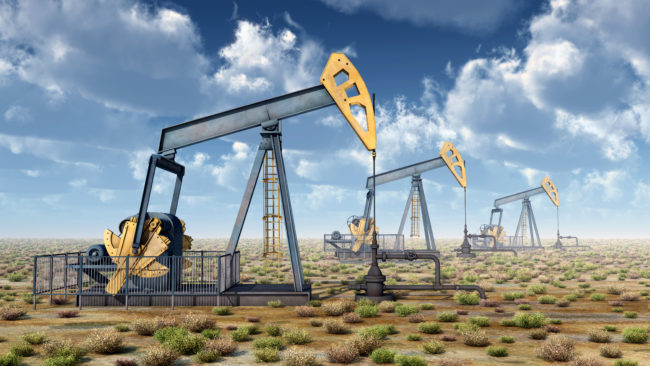On March 19, 2019, the United States District Court for the District of Columbia issued a ruling blocking, at least temporarily, approved oil and gas drilling on approximately 300,000 acres in Wyoming.
The case, WildEarth Guardians v. Zinke, et al., 16-1724 (D.C. Cir.), was brought by two advocacy groups, Wildlife Guardians and Physicians for Social Responsibility, which alleged that the Bureau of Land Management (BLM) violated federal law by not sufficiently considering climate change when authorizing oil and gas leasing on federal land in Wyoming, Utah, and Colorado.
To appreciate why the court blocked the Wyoming oil and gas drilling, it is necessary to have a basic understanding of the myriad interconnected federal laws and regulations that govern the issuance of federal drilling permits.
Initially, under the Mineral Leasing Act (MLA), the secretary of the interior is responsible for managing and overseeing mineral development on public lands in a manner that “safeguard[s] … the public welfare.” 30 U.S.C. Section 181-287.
The MLA’s mandate to lease federal land for oil and gas development is overseen by the BLM, the actions of which must be in compliance with the Federal Land Policy and Management Act of 1976 (FLPMA), 43 U.S.C. Section 1701-1787. The FLPMA establishes a series of steps the BLM must undertake when leasing federal lands for oil and gas development. See generally, Id., Section 1712(a); 43 C.F.R. Section 1601.0-5(n). These steps, in turn, are governed by the provisions of the National Environmental Policy Act (NEPA). C.F.R. Section 1500 et seq., the purpose of which is to “promote efforts which will prevent or eliminate damage to the environment and biosphere and stimulate the health and welfare of [humans].” 42 U.S.C. Section 4321.
Under the dictates of NEPA, an agency must prepare an environmental impact statement (EIS) for every “major [f]ederal action … significantly affecting the quality of the human environment.” To determine whether an EIS is necessary for a particular action, the relevant agency may prepare an environmental assessment (EA), which is a “concise public document” that “[b]riefly provide[s] sufficient evidence and analysis for determining whether to prepare an [EIS].” Dept. of Transp. v. Pub. Citizen, 541 U.S. 752, 757 (2004) (quoting 40 C.F.R. Section 1508.9(a)). The EA must take a “hard look” at the environmental consequences of the proposed action, Kleppe v. Sierra Club, 427 U.S. 390, 410 n.21 (1976), including its direct, indirect, and cumulative effects. EarthReports, Inc. v. FERC, 828 F.3d 949, 953 (D.C. Cir. 2016); 40 C.F.R. Section 1508.9, 1508.25(c), (emphasis added). If, after preparing the EA, the agency determines that an EIS is not necessary, the agency must issue a finding of no significant impact (FONSI) summarizing its decision. 40 C.F.R. Section 1501.3, 1501.4, 1508.13.
The plaintiffs in the WildEarth case alleged that BLM failed to comply with NEPA requirements in the approval and issuance of 473 oil and gas leases, covering 460,000 acres in Wyoming, Utah, and Colorado. In approving the leases, BLM had determined that the leases did not require the issuance of EISs, such that BLM instead issued EAs and FONSIs. The plaintiffs claimed that the EAs and FONSIs failed sufficiently to account for the greenhouse gas (GHG) emissions that would be generated by the oil and gas development on the leased parcels. WildEarth,at 8.
The court agreed with the plaintiffs, holding that the challenged EAs failed to take a “hard look” at the climate change impacts of oil and gas drilling because the EAs: (i) failed to quantify and forecast drilling-related GHG emissions; (ii) failed to adequately consider GHG emissions from the downstream use of oil and gas produced on the leased parcels; and (iii) failed to compare those GHG emissions to state, regional, and national GHG emissions forecasts, and other foreseeable regional and national BLM projects. Id. at 56.
Essentially, instead of doing a rigorous analysis of the potential impacts from the GHGs that would be released from the approved drilling and downstream impacts, the BLM merely provided a cursory analysis of potential climate change impacts on a conceptual level, “[summarizing] Wyoming’s current climate, [explaining] the mechanisms of climate change, [acknowledging] that oil and gas drilling contributes to climate change, and [predicting] the impact of climate change on the state’s climate.” Id. at 10.
Interestingly, because the WildEarth suit began under the Obama Administration, the plaintiffs argued that BLM should have utilized the “social cost of carbon” (SCC) in undertaking its analysis of GHG impacts from the approved drilling. However, recent moves by the Trump Administration effectively have gutted the purpose of the SCC analysis, by employing a high-end discount rate of 7 percent instead of the previously applied rate of 3 percent, which effectively reduces the SCC from approximately $47/ton to around $6/ton — a reduction of over 85 percent. In other words, under the new calculation, climate change-related regulations provide little value.
Also worth noting is that the EAs conclude that, “[w]hen compared to total national or global emissions, the amount of [GHG emissions] released as a result of potential production from the proposed lease tracts would not have a measurable effect.” Id. at 11. This was the same approach taken in the government’s Safer Affordable Fuel-Efficient Vehicles Rule for Model Year 2021-2026 Passenger Cars and Light Trucks draft environmental impact statement (EIS), which compared potential GHG auto releases from revised standards to the worst-case scenario of GHG emissions under a 3.5°C (6.3°F) warming by the end of the century.

